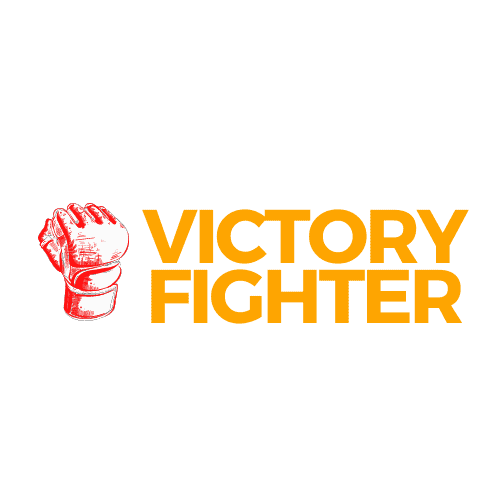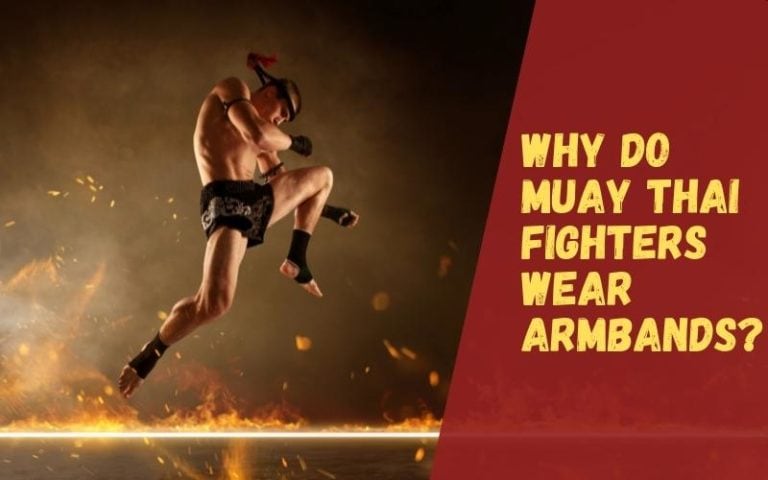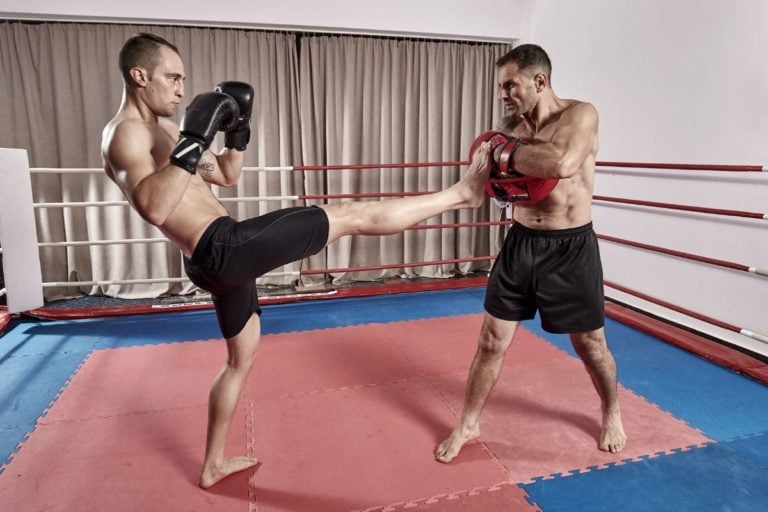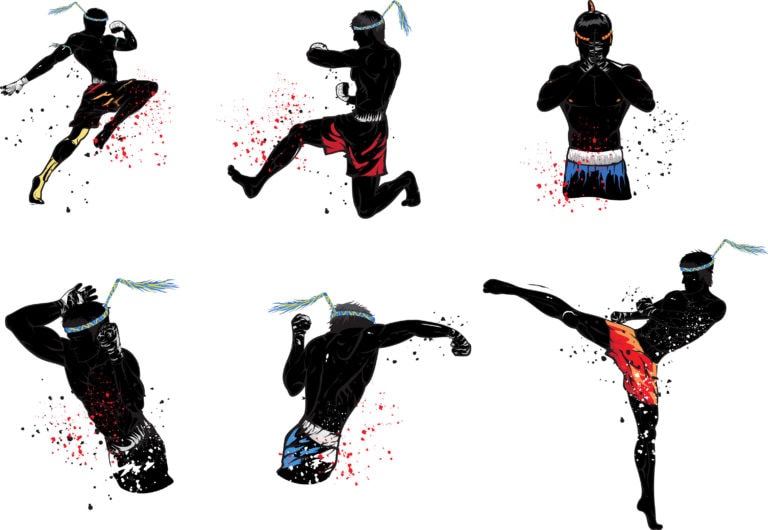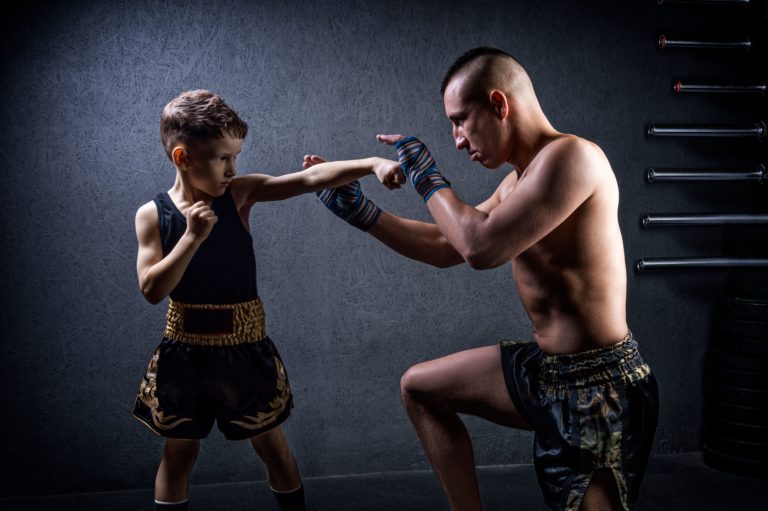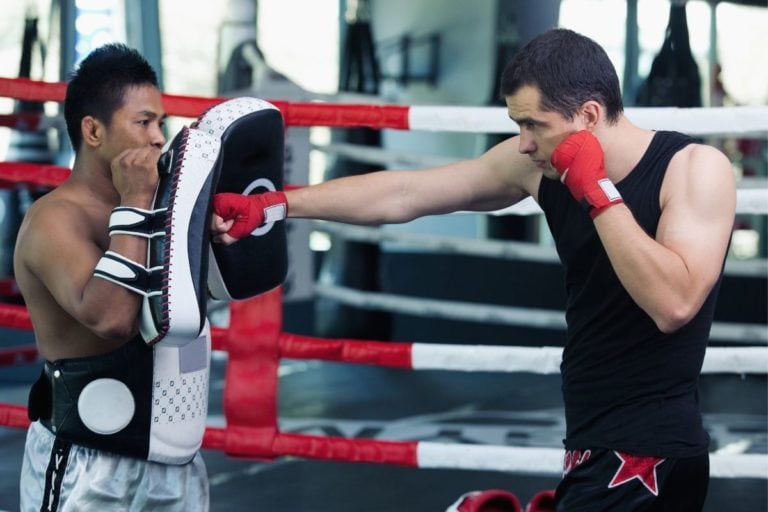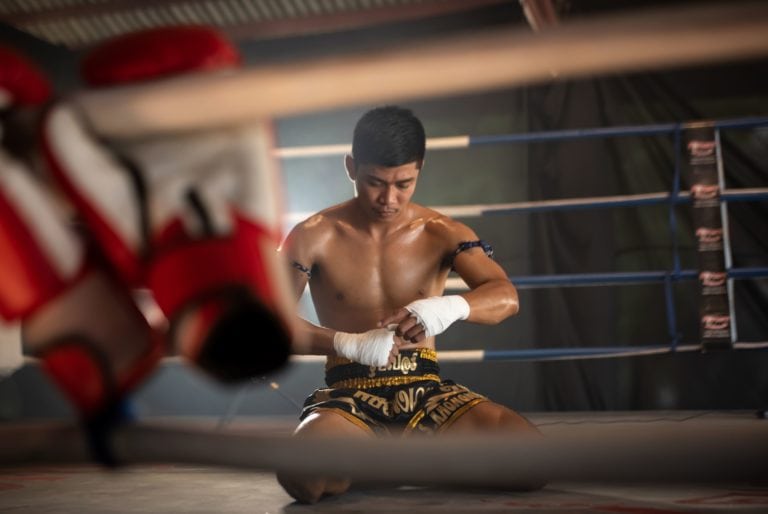Does Muay Thai Have a Ranking System?
If you think about the martial arts of Judo, Karate, BJJ, and taekwondo, they all have a ranking system. To be more precise, they all have a belt system that indicates the rank of the practitioner or fighter. So now you are wondering, does Muay Thai have a ranking system also?
The answer is NO; traditional Muay Thay does not have a ranking system, and for a good reason. You might have seen some westernized Muay Thai gym rank their fighter with the armbands they carry into fights, called Pra Jiad. However, this is not common practice in Thailand. Most of the Muay Thai world agrees that you can only show your skills by fighting and winning fights.
Muay Thai was created to protect yourself and damage your opponent on the battlefield in case you lost your weapon. Muay Thai was not created as a sport even though currently it is one of the largest in the martial arts world; therefore, there was no need to have a ranking system in place.
History Of The Ranking System
The practice of giving students of certain martial arts belts to rank their skills is relatively new. It came into existence in the 19th century by the father of Judo (Jigorō Kanō). He wanted to give his students a physical representation of their progress. The idea quickly caught on in other martial arts, such as Karate and Taekwondo. Muay Thai, however, has never had a belt or ranking system, nor do I believe it will ever catch on in Thailand.
Why Do Some Gyms Practice The Ranking System?
Like everything in life, you need something to strive for; it is the same in Muay Thai, but that is accomplished differently in different parts of the world. While some gyms in the west have adopted a ranking system for their Muay Thai students as a sign of progress and motivation, the authentic Muay Thai gyms in Thailand believe that the only thing that should motivate you is your own skill and winning fights and tournaments.
There have been done numerous studies showing that people will stick with something, like a sport or martial art, for a longer amount of time if they know what they are working for, meaning they have a clear goal in mind. This is especially true for children since they do not start competing as early (they do in Thailand), and you need to give them a goal to strive for, which in some gyms in the west is a certain Muay Thai belt color.
Some gyms also use the ranking system as a way to let the fighters know who is on a similar level of skill as them during sparring. In that way, you can quickly see who is on your level and partner up with them for a round of sparring.
How Do They Practice Ranking In The West?
The western Muay Thai gyms give rank to their fighter through the color of their armbands called the Pra Jiad. These armbands are of cultural value to the sport of Muay Thai. They are said to give the fighter special powers that will grant them protection and luck in the ring. A few centuries ago, they came into existence when mothers would give their sons a piece of their clothing to wrap around their biceps as a good luck charm and as a reminder to return home after the battle.
There are a total of 13 belt colors in the Muay Thai gyms that practice the belt system. Three colors for beginners, 6 for advanced with, of course, the black color being the last, and four colors schemes for the instructors. There are also some instances where the western gyms use colored shirts as a sort of ranking system. Most of the gyms that practice the ranking system are what we call McDojos. You can clearly tell if a Muay Thai gym is a McDojo if they make you pay for a grading test to “assess your skills” to earn a new belt color. If you come upon such a gym, run away as quickly and as far away as possible.
Even though most of the gyms that practice the ranking system are considered McDojos, there are some that stand out by the quality and professionalism of the fighters they bring out. One of them is the Bang Muay Thai gym, which has more than a few professional fighters under its roof. TJ Dillashaw, a Bantamweight champion of the UFC and an excellent striker, is one of the students of Bank Muay Thai.
Ranking Skills In Traditional Muay Thai
Like we said earlier, Muay Thai has come into existence on the battlefield. It was not meant to be a sport, but it has become a professional combat sport in Thailand since then. Professional combat sport means that the fighters do it for a living; it is their job; they train 2 to 3 times a day and practically live in the gym or in the camp. It is not just a hobby they do a few times a week after work, the paycheck and depends whether they win or lose a fight.
For that reason, there is no need to have a ranking system in traditional Muay Thai since it would not accomplish much. The fighters would still be paid based on their skills and ability to win fights. You can clearly see how skilled a fighter someone is by looking at their fight record. Look at Buakaws or Saenchais fight records, each with 230 and 303 wins, respectively. These guys and others like them do not need a ranking system to show you how skilled they are.
Conclusion
Authentic Muay Thai gyms do not have a ranking or a belt system. These gyms believe the only way to show your skill is to fight and win belts and trophies. However, some Muay Thai gyms in the west practice the ranking system through the armbands (Pra Jiad)or the color of the shirt with the goal of encouraging the practitioners to keep on training and improving.
